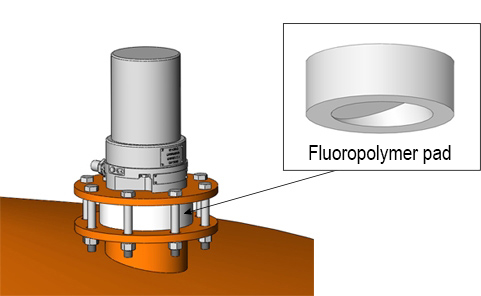Level Measurement in Evaporation and High-Temperature Conditions
When product heating is provided (mazut, hot water, bitumen) or during storage of products with relevant physical and chemical properties (acids, alkalis, alcohols, etc.), vapours can accumulate in the space above the measured product. Vapours in the air, in the space between the level transmitter and the product, do not affect the measurement error and stability: this is a property of all radar level transmitters.
Level measurements using an ultrasonic or optical (laser) method will be highly unstable and inaccurate because a sound velocity hugely depends on the atmosphere composition where it propagates while the laser method requires direct optical visibility.
Danger of dew fall on the antenna
Dew fall can affect the level measuring process using the radar level transmitter in conditions of intense vaporization. Heavy dew fall on the antenna surface can result either in a higher level measurement error or unstable measurements. The ULM series level transmitters resolve this matter by lens-aided antenna protection (please see the structure of level probes).
Intense vaporization
If the tank has intense vaporization and is heat-insulated from the environment at the same time, for example, buried in the earth, moisture precipitation can achieve values when there is not enough time for moisture to flow down from the protective lens. In this case, a special radar-transparent insulating pad is used.

This pad is of a special shape and made of fluoropolymer. The fluoropolymer pad provides additional protection against moisture precipitation and optimizes electromagnetic-wave propagation. The pad also ensures heat insulation of the level transmitter/probe from the inner tank space.